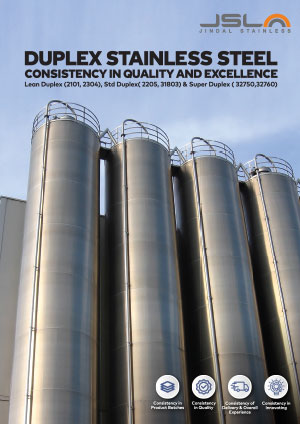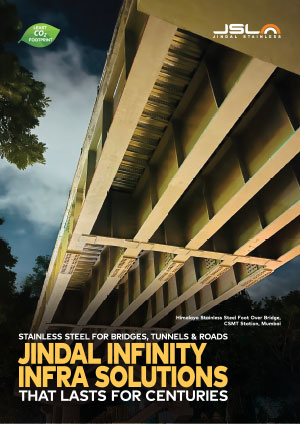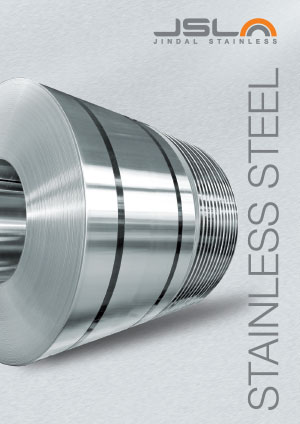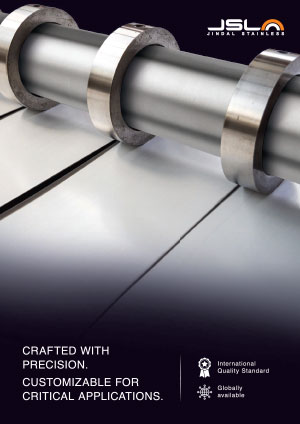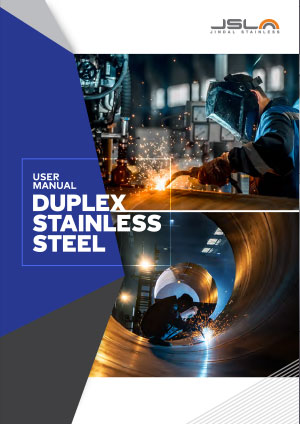
ROB
Stainless steel offers numerous benefits when used in bridge construction, making it a popular choice for various types of bridges.
Some of the key advantages include:
• Corrosion Resistance: Stainless steel is highly resistant to corrosion, making it ideal for bridges located in harsh environments, such as coastal areas or regions with high pollution levels. Its ability to withstand rust and degradation ensures the longevity and durability of the bridge.
• Low Maintenance: Due to its corrosion-resistant properties, stainless steel bridges require minimal maintenance over their lifetime. This translates to reduced maintenance costs and less disruption to traffic during upkeep activities.
• Strength and Load-Bearing Capacity: Stainless steel has excellent mechanical properties, providing bridges with high strength-to-weight ratios. This allows for the construction of lighter and more slender structures capable of supporting heavy loads.
• Aesthetics: Stainless steel bridges offer a sleek and modern appearance, making them attractive additions to urban landscapes and iconic structures.
• Sustainability: Stainless steel is a recyclable material, promoting eco-friendly practices and reducing the environmental impact of bridge construction.
• Fatigue Resistance: Stainless steel exhibits excellent fatigue resistance, ensuring that the bridge can withstand cyclic loading and maintain structural integrity over extended periods.
• Fire Resistance: Certain grades of stainless steel have high resistance to fire, adding an extra layer of safety to bridge structures.
Overall, the use of stainless steel in bridges combines strength, durability, and aesthetics, making it a cost-effective and reliable material for modern bridge construction projects.

Bridges
"• Truss Bridge: A truss bridge is a robust and economical engineering marvel constructed using a framework of interconnected triangular elements (trusses). These bridges efficiently distribute loads and provide excellent strength-to-weight ratios. They are commonly used to span long distances, such as over rivers or valleys, and are favoured for their structural stability and versatility.
Grade Yield Strength Tensile Strength % Elongation
Grade 350 MPA min 485 MPA min 18 min
Grade 450 MPA min 585 MPA min 18 min
Structural Applications:
A. Plates:
Thickness: 3 - 80 mm
Width: 1500 mm max
Length: 13000 mm max
B. Fabricated Girders:
Stainless steel I-beams, H-beams, hollow-section tubes & bent profiles for lead bearing structures available in lengths upto 13 m without length slicing
C. Angles Channels:
Cold rolled formed/press sections
• Pylon Bridge Project: A pylon bridge project involves the construction of a bridge supported by imposing pylon structures. These bridges often feature cable-stayed designs, where cables radiate from the pylons to support the bridge deck. Pylon bridges are visually striking and well-suited for long spans, making them an excellent choice for modern and iconic structures.
• Spiral Bridge: A spiral bridge is a unique architectural marvel that allows for elevation changes while maintaining a gentle, continuous slope. It is designed in a helical shape, resembling a spiral. Spiral bridges are employed in mountainous terrains or steep landscapes to provide safe and steady passage, minimizing sharp inclines and declines for vehicles and pedestrians.
• Bow String Bridge: A bow string bridge is an aesthetically appealing and efficient design that features a curved, bow-like main truss supporting the bridge deck. The curvature of the bow distributes the loads evenly, resulting in a visually striking and structurally stable bridge. Bow string bridges are commonly used for pedestrian crossings, as well as light vehicular traffic, showcasing an elegant combination of form and function.
• Road Over Bridge: Grade Yield Strength Tensile Strength % Elongation Grade 350 MPA min 485 MPA min 18 min Grade 450 MPA min 585 MPA min 18 min
Structural Applications:
A. Plates:
Thickness: 3 - 80 mm
Width: 1600 mm max
Length: 12000 mm max
B. Fabricated Girders:
Stainless steel I-beams, H-beams, hollow-section tubes & bent profiles for lead bearing structures available in lengths upto 12 m without length splicing
C. Angles Channels:
Cold rolled formed/press sections
• Bolted Bow String Bridge: Stainless steel bolted bowstring bridges offer durability, corrosion resistance, and ease of maintenance. The bolted construction facilitates efficient assembly and disassembly, reducing installation time. These bridges provide a cost-effective and aesthetically pleasing solution, combining structural strength with the benefits of stainless steel for long-lasting and visually appealing infrastructure.

Stainless Steel Rebars
Stainless steel rebars, commonly used in construction, are reinforcing bars made from stainless steel alloys. These bars are utilized to reinforce and strengthen concrete structures, such as buildings, bridges, and other infrastructure projects, where corrosion resistance and durability are essential. When referring to """"blocks"""" in the context of stainless steel rebars, it could imply several things:
• Stainless Steel Rebar Blocks: These are stainless steel rebar sections cut and shaped into small, block-like components. They are typically used in specific construction applications where a block shape is needed, such as for anchoring or joining structural elements.
• Stainless Steel Reinforced Concrete Blocks: These are concrete blocks reinforced with stainless steel rebars. The stainless steel rebars are embedded within the concrete blocks to provide added strength and resistance to corrosion, making them suitable for various construction purposes.
• Concrete Blocks with Stainless Steel Reinforcements: This refers to concrete blocks that have stainless steel rebars inserted into them to enhance their structural integrity and resistance to environmental factors, such as moisture and chemicals.
• Stainless Steel Rebar Blocks as Building Components: In some cases, stainless steel rebar blocks may be used as building components, serving as both reinforcement and a structural element in construction. These blocks may be prefabricated and assembled on-site to form various structural elements.
In any of these scenarios, stainless steel rebars are chosen for their exceptional corrosion resistance properties, which make them ideal for construction in harsh or corrosive environments, including coastal regions or areas with exposure to chemicals. The use of stainless steel rebars ensures the longevity and durability of the concrete structures, reducing the need for maintenance and repair over time.
Stainless Steel Rebar Confirming to IS 16551: 2017 in SS 500, 550 & 600 MPa Strengths.
Length – Upto 12 m.
Diameters available:
8 mm
10 mm
12 mm
16 mm
20 mm
25 mm
32 mm

Truss Structure with Hollow Tubular Sections - JSLL Plant
• Corrosion Resistance: Stainless steel is highly resistant to corrosion, making it ideal for bridges located in harsh environments, such as coastal areas or regions with high pollution levels. Its ability to withstand rust and degradation ensures the longevity and durability of the bridge.
• Low Maintenance: Due to its corrosion-resistant properties, stainless steel bridges require minimal maintenance over their lifetime. This translates to reduced maintenance costs and less disruption to traffic during upkeep activities.
• Strength and Load-Bearing Capacity: Stainless steel has excellent mechanical properties, providing bridges with high strength-to-weight ratios. This allows for the construction of lighter and more slender structures capable of supporting heavy loads.
• Aesthetics: Stainless steel bridges offer a sleek and modern appearance, making them attractive additions to urban landscapes and iconic structures.
• Sustainability: Stainless steel is a recyclable material, promoting eco-friendly practices and reducing the environmental impact of bridge construction.
• Fatigue Resistance: Stainless steel exhibits excellent fatigue resistance, ensuring that the bridge can withstand cyclic loading and maintain structural integrity over extended periods.
• Fire Resistance: Certain grades of stainless steel have high resistance to fire, adding an extra layer of safety to bridge structures.
Overall, the use of stainless steel in bridges combines strength, durability, and aesthetics, making it a cost-effective and reliable material for modern bridge construction projects.

Kariyappa Pylon Bridge Project
Project Name: Cable-Stayed Flyover from Approach of Field Marshal Karriappa Flyover on East Side to Western Express Highway Borivali (East).
Scope: Stainless Steel Pylon for Pylon Structures 54 m Cable Stay Bridge.
Dimensions
54 m, 3 m x 2.5 m in Cross Section.
Grade: IRS 350 CR.
Organization: Municipal Corporation of Greater Mumbai (MCGM).
• Corrosion Resistance: Stainless steel is highly resistant to corrosion, making it ideal for bridges located in harsh environments, such as coastal areas or regions with high pollution levels. Its ability to withstand rust and degradation ensures the longevity and durability of the bridge.
• Low Maintenance: Due to its corrosion-resistant properties, stainless steel bridges require minimal maintenance over their lifetime. This translates to reduced maintenance costs and less disruption to traffic during upkeep activities.
• Strength and Load-Bearing Capacity: Stainless steel has excellent mechanical properties, providing bridges with high strength-to-weight ratios. This allows for the construction of lighter and more slender structures capable of supporting heavy loads.
• Aesthetics: Stainless steel bridges offer a sleek and modern appearance, making them attractive additions to urban landscapes and iconic structures.
• Sustainability: Stainless steel is a recyclable material, promoting eco-friendly practices and reducing the environmental impact of bridge construction.
• Fatigue Resistance: Stainless steel exhibits excellent fatigue resistance, ensuring that the bridge can withstand cyclic loading and maintain structural integrity over extended periods.
• Fire Resistance: Certain grades of stainless steel have high resistance to fire, adding an extra layer of safety to bridge structures.
Overall, the use of stainless steel in bridges combines strength, durability, and aesthetics, making it a cost-effective and reliable material for modern bridge construction projects.

Spiral Bridge
Project Name: Washermanpet Sywalk.
Organisation: Greater Cooperation Chennai
Project Location: Washermanpet Chennai.
Dimensions:
Overall Length: 260 m
Width: 6 m
Grade in Consideration:
1. IRS 350 CR for Structural Components like Columns, Girders and Bracings.
2. 316 for Circular Tubular Sections forming the Helix or Spiral.
• Corrosion Resistance: Stainless steel is highly resistant to corrosion, making it ideal for bridges located in harsh environments, such as coastal areas or regions with high pollution levels. Its ability to withstand rust and degradation ensures the longevity and durability of the bridge.
• Low Maintenance: Due to its corrosion-resistant properties, stainless steel bridges require minimal maintenance over their lifetime. This translates to reduced maintenance costs and less disruption to traffic during upkeep activities.
• Strength and Load-Bearing Capacity: Stainless steel has excellent mechanical properties, providing bridges with high strength-to-weight ratios. This allows for the construction of lighter and more slender structures capable of supporting heavy loads.
• Aesthetics: Stainless steel bridges offer a sleek and modern appearance, making them attractive additions to urban landscapes and iconic structures.
• Sustainability: Stainless steel is a recyclable material, promoting eco-friendly practices and reducing the environmental impact of bridge construction.
• Fatigue Resistance: Stainless steel exhibits excellent fatigue resistance, ensuring that the bridge can withstand cyclic loading and maintain structural integrity over extended periods.
• Fire Resistance: Certain grades of stainless steel have high resistance to fire, adding an extra layer of safety to bridge structures.
Overall, the use of stainless steel in bridges combines strength, durability, and aesthetics, making it a cost-effective and reliable material for modern bridge construction projects.

Stainless Steel Chequered Sheet
HR (Hot Rolled) and CR (Cold Rolled) stainless steel chequered sheets are specialized metal sheets designed for enhanced safety and aesthetics in various applications. The chequered pattern, featuring raised diamonds or lines, provides a slip-resistant surface, reducing the risk of accidents and enhancing traction.
HR stainless steel chequered sheets are manufactured by hot rolling stainless steel coils at high temperatures, resulting in a rougher surface finish. They are commonly used in heavy-duty applications, such as industrial flooring, ramps, stairs, and transportation platforms.

Crash Barrier
Using Fiber Reinforced Polymer (FRP) rebars in crash barriers offers several advantages:
• Corrosion Resistance: FRP rebars are highly resistant to corrosion, which is a significant advantage, especially in areas with high moisture, salt exposure (like coastal regions), or harsh chemical environments.
• Lightweight: FRP rebars are significantly lighter than traditional steel rebars, making them easier to handle during construction and reducing transportation costs.
• High Strength-to-Weight Ratio: Despite being lightweight, FRP rebars offer high tensile strength, contributing to the structural integrity of crash barriers.
• Non-Conductive: FRP rebars are non-conductive, making them an excellent choice for crash barriers near electrical installations or in areas where conductivity needs to be minimized, reducing risks of electrical hazards.
• Dimensional Stability: FRP materials are less susceptible to expansion and contraction due to temperature variations, ensuring stability and durability of the crash barriers over time.
• Low Maintenance: Similar to stainless steel rebars, FRP rebars require minimal maintenance due to their resistance to corrosion, potentially reducing long-term maintenance costs.
• Design Flexibility: FRP materials offer design flexibility, allowing crash barriers to be tailored to specific project requirements with various shapes and configurations.
• Environmental Benefits: FRP materials can be eco-friendly as they are often made from recycled materials and are themselves recyclable, contributing to sustainability efforts.
However, there might be limitations in terms of cost-effectiveness compared to traditional steel rebars and a requirement for specialized expertise during installation. FRP's higher upfront cost might sometimes be a deterrent, but the long-term benefits, including reduced maintenance and longevity, often justify the initial investment, especially in corrosive environments or in specialized applications where their unique properties are advantageous.

Light Pole
We are tenacious manufacturers of FRP light poles, GRP light poles that can be utilized as decorative poles in the garden, parks, and other places.

Stainless Steel Sections
Stainless steel I-sections and T-sections are specialized structural profiles widely used in the construction industry for their superior strength, durability, and corrosion resistance.
Stainless steel I-sections, also known as I-beams or H-beams, feature a distinctive ""I"" shape with a vertical web and horizontal flanges. These profiles efficiently distribute loads along their length, making them ideal for supporting heavy loads in construction projects, such as building frames, bridges, and industrial structures.
Stainless steel T-sections, on the other hand, have a shape resembling the letter ""T,"" with a vertical web and a horizontal top flange. T-sections are commonly used as lintels and support beams in construction applications, where they offer excellent load-bearing capacity and stability.
Both stainless steel I-sections and T-sections are fabricated from corrosion-resistant stainless steel alloys, ensuring longevity, low maintenance, and aesthetic appeal. Their versatility, strength, and ability to withstand harsh environmental conditions make them preferred choices for a wide range of architectural and engineering projects.

Stainless Steel Roofing
Stainless steel industrial roof sheets are premium-quality roofing materials designed to withstand harsh environmental conditions and provide long-lasting protection for industrial structures. These roof sheets are crafted from stainless steel, an alloy containing chromium and other elements, offering exceptional resistance to corrosion, weathering, and rust.
The industrial-grade stainless steel roof sheets are available in various profiles and thicknesses, catering to diverse roofing needs and architectural designs. Their superior strength ensures structural integrity and the ability to withstand heavy loads, making them suitable for large-scale industrial buildings.
With high-temperature resistance and fire-retardant properties, these roof sheets provide an added layer of safety. Additionally, stainless steel industrial roof sheets offer excellent thermal insulation, promoting energy efficiency and reducing heating and cooling costs.
Due to their low maintenance requirements, these roof sheets are cost-effective in the long run. Their aesthetic appeal and clean, modern look enhance the overall appearance of industrial facilities. Overall, stainless steel industrial roof sheets are a reliable, durable, and versatile roofing solution, ideal for protecting assets and ensuring the longevity of industrial structures.

Stainless Steel Cable Tray
Details:
Grade- EN 1.4404, 304, 204CU,430,316L
Width- 300x300
Thickness- 1.2
Length- 300

Clad Plate
Dimensions: 4 nos samples of SS-1 &C276-1, 200mm x 200mm (Thickness 10 mm) with Approx. Weight 15 Kg each
2 nos Bent Sample of both above; 50mm Width 100mm Length; Approx Weight 10 Kg

Stainless Steel Grating
Stainless steel gratings provide a clean, strong, and reliable structure that combines the safety of greater hygiene with an aesthetically pleasing design. Our range of stainless steel gratings is corrosion-resistant, heat-resistant, low on maintenance, and durable, making them suitable for multiple applications.

Stainless Steel Railings
Stainless steel railings, commonly crafted from grades 304 or 316 stainless steel, offer a blend of strength, corrosion resistance, and aesthetic appeal. Grade 304 suits indoor and mildly corrosive outdoor settings, while Grade 316 excels in marine or salt-exposed environments. Both grades provide durability, low maintenance, and a sleek appearance. Stainless steel railings enhance safety, withstand environmental elements, and offer a cost-effective solution for creating secure and visually appealing railing systems in various residential and industrial applications.
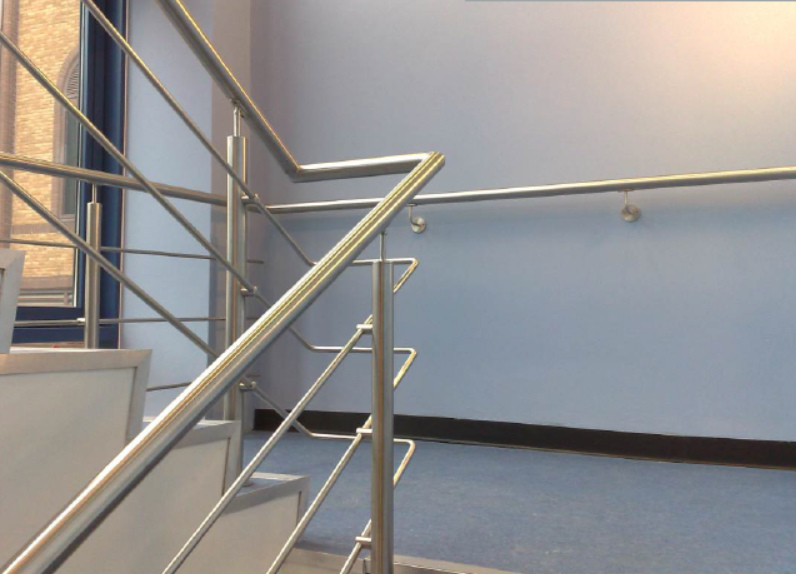

-29-07-2023.jpg)
